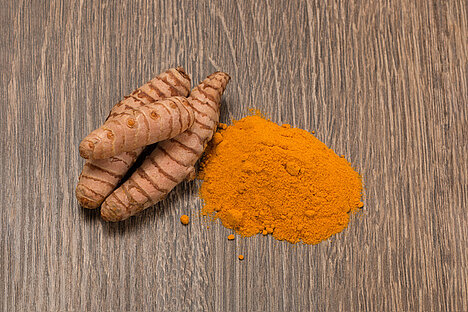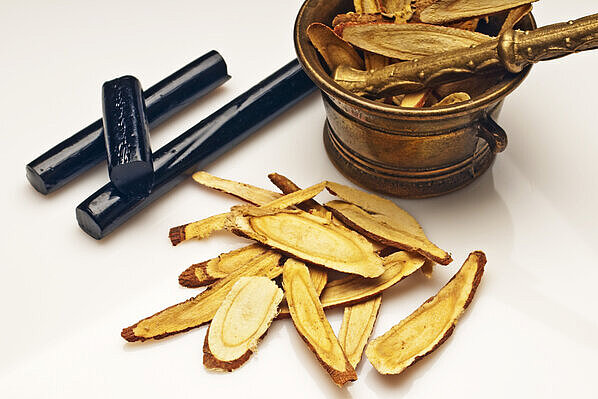Turmeric root

You may have heard of turmeric root, a spice used in Indian cuisine and Ayurvedic medicine. But did you know that turmeric root can also be healthy for dogs? In this article, you'll find out what turmeric root is, what benefits and disadvantages it has for your dog and how best to use it.
What is turmeric root?
Turmeric root is the root of the Curcuma longa plant, which belongs to the ginger family. The root has a yellow color and a spicy taste. It contains the active ingredient curcumin, which is known for its anti-inflammatory, antioxidant and antimicrobial properties.
What are the benefits of turmeric root for dogs?
Turmeric root can help your dog with various health problems, such as
- Arthritis: turmeric root can relieve pain and swelling in the joints by inhibiting the production of pro-inflammatory messengers.
- Cancer: turmeric root can slow or stop the growth of cancer cells by reducing the blood supply to tumors and triggering apoptosis (programmed cell death).
- Gastrointestinal complaints: Turmeric root can aid digestion, protect the stomach lining and prevent or relieve diarrhea or vomiting.
- Skin problems: Turmeric root can treat skin infections, allergies or eczema by accelerating healing and soothing the skin.
What are the disadvantages of turmeric root for dogs?
Turmeric root is generally well tolerated by dogs, but there are some possible side effects or risks you should be aware of, such as
- Blood clotting: Turmeric root can delay or impair blood clotting, which can lead to bleeding or bruising. If your dog is taking blood-thinning medication or is about to have surgery, you should speak to your vet beforehand.
- Kidney stones: Turmeric root can increase oxalate levels in the urine, which can lead to kidney stones. If your dog is prone to kidney stones or has kidney disease, you should be careful.
- Overdose: Too high a dose of turmeric root can lead to stomach upset, liver damage or allergic reactions. Therefore, stick to the recommended dosage and monitor your dog for any signs of discomfort.
How do you use turmeric root for your dog?
There are various ways in which you can use turmeric root for your dog. For example, you can:
- Buy fresh or dried turmeric root and finely chop or grate it. You can then add it to your dog's food or water. The recommended dosage is around 15 to 20 mg per kilogram of body weight per day.
- Buy a ready-made product based on turmeric root, such as capsules, tablets or powder. Make sure that the product is suitable for dogs and does not contain any additives. Follow the instructions on the packaging or ask your vet for the correct dosage.
- Make a paste from turmeric root and apply it directly to your dog's skin. You can do this by mixing about a teaspoon of turmeric powder with a little water and some coconut oil. You can apply the paste two to three times a day for skin problems.
Turmeric root is a natural and effective ingredient for your dog's health. It can help with various ailments, such as arthritis, cancer or gastrointestinal problems. However, you should also be aware of the possible side effects or risks and not overdose your dog.
If you notice any signs of hypersensitivity or poisoning in your dog, you should see your vet immediately. We are not a substitute for a vet, but we try to be as accurate as possible. Every dog reacts differently and we recommend you get a second opinion or consult your vet if in doubt.
Stay healthy and take good care of your four-legged friend!😊
Similar to Turmeric root
True galangal (Alpinia galanga) is a plant from the ginger family that is mainly found in South East Asia. The root of this plant is valued both in the culinary world and in traditional medicine. It...
Ginger is a plant from the ginger family. The root tuber is used as a spice or medicine. It has a pungent taste and a spicy smell. Ginger contains many valuable ingredients, such as gingerol, which...
Licorice root is the root of the Glycyrrhiza glabra plant, which belongs to the legume family. It grows mainly in southern Europe, Asia and North Africa. The root has a sweet taste and contains the...
Horseradish (Armoracia rusticana) is a plant from the cruciferous family, which also includes cabbage, radishes and mustard. The plant forms a thick, fleshy root that can grow up to 60 cm long and 6...



